Graphics Reference
In-Depth Information
The two last approaches to blending that we shall mention are quite different from
all the others. The first is due to Roach and Martin ([RoaM92]), who use Fourier trans-
form methods. Roughly speaking, one starts with a rectangular array of points chosen
from the relevant region in the initial surface. The Fourier transform is then applied
to these points, the high-frequency part of this data is attenuated, and then mapped
back by means of the inverse Fourier transform. The motivation for this is that high
frequencies correspond to sharp changes in shape, such as, for example, at vertices
and edges, and the mathematical steps taken are a way to smooth these changes. The
other blending approach is due to Bloor and Wilson ([BloW89a] and [BloW89b]), who
argue that a blending surface can be thought of as a solution to the following type of
problem:
Given a region W with boundary ∂W, is there a function defined on that region that satis-
fies some given conditions on ∂W?
This is a well-known type of problem in analysis and leads naturally to Laplace-type
partial differential equations satisfying certain boundary conditions. We sketch the
example in [BloW89b]. That example involves blending a vertical cylinder of radius 1
centered on the z-axis and the horizontal xy-plane z = 0. In our current context, a
parameterization
(
)
=
(
(
)
(
)
(
)
)
puv
,
xuv yuv zuv
,
,
,
,
,
for the blending surface, should therefore be interpreted as a solution to the partial
differential equations
2
2
2
2
2
2
2
∂
∂
x
u
∂
∂
x
v
∂
∂
y
u
∂
∂
y
v
Ê
Á
∂
∂
∂
∂
ˆ
˜
2
2
2
+
b
=
0
,
+
b
=
0
,
and
+
a
z
=
0
,
(15.18)
2
2
2
2
2
2
u
v
where a and b are constants that have been introduced to allow for more control over
the solution. The trimlines were taken to be the circle
2
2
zh x y
=
,
+
=
1
at height h on the cylinder and the circle
2
2
2
z
=
0
,
x
+
y
=
R
.
in the plane. Given the boundary conditions
(
)
=
(
)
=
(
)
=
xv v yv vzv h
xv R v yv R v zv
xv
0
,
cos ,
0
,
sin ,
0
,
,
()
=
()
=
()
=
1
,
cos ,
1
,
sin ,
1
,
0
,
(
)
=
(
)
=
(
)
=
0
,
0
,
yv
0
,
0
,
zvs
0
,
,
u
u
u
()
=
()
()
π 0,
z
10 1
,
v
,
x
,
v
and or y
1
,
v
(15.19)
u
u
u
it turns out that one can write down an explicit solution to equations (15.18) that
depends on the two parameters a and s. (The parameter b ends up being fixed for this




